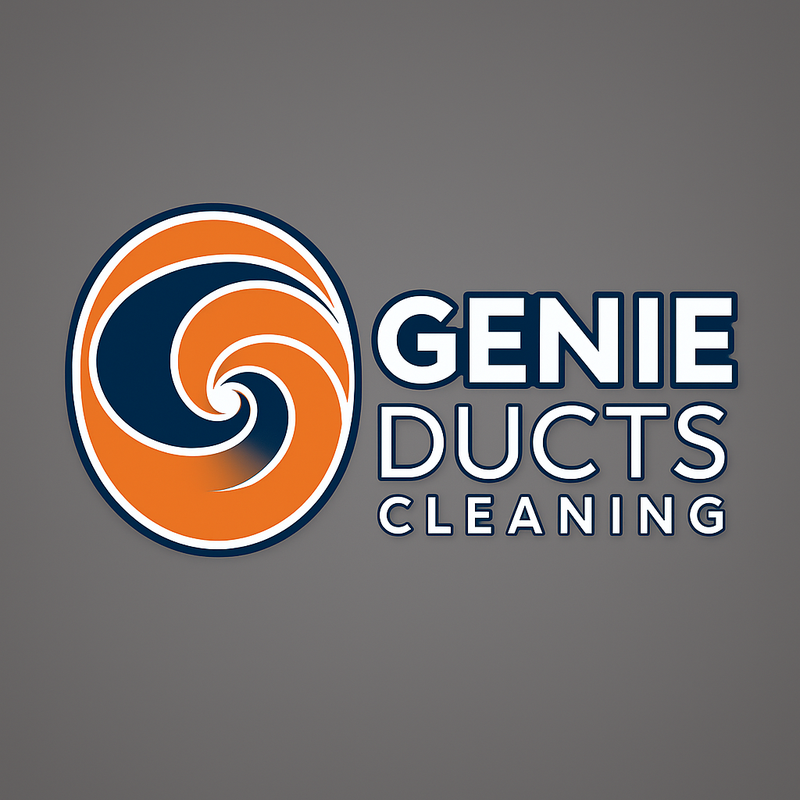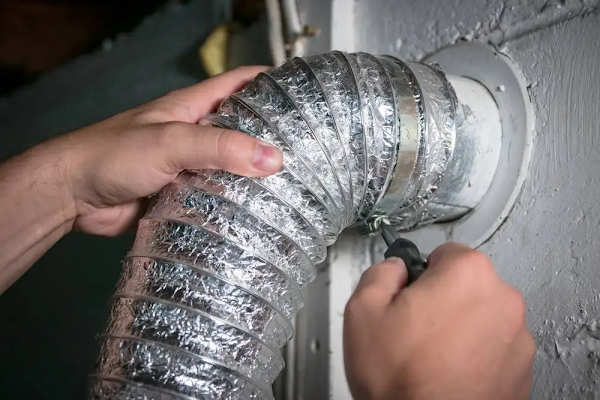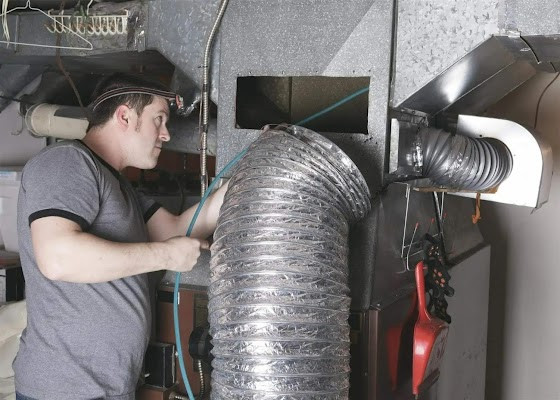Smart Homes, Cleaner Air: Integrating Air Duct Cleaning into LA's Modern Residences
Los Angeles, United States Minor Outlying Islands - May 12, 2025 / Genie Ducts Cleaning /
There’s a reason LA homeowners are paying closer attention to the air they breathe indoors. Allergies aren’t just a seasonal thing anymore, and that "dusty smell" when the HVAC kicks in? It’s more than just annoying—it could be carrying pet dander, mold spores, or even traces of smog. In a city where smart homes are becoming the norm, it's surprising how often air duct systems get overlooked.
This information is based on insights from technicians at Genie Ducts Cleaning, who've seen firsthand how even newly built smart homes collect contaminants fast—especially in neighborhoods with heavy traffic or construction. According to their data, 7 out of 10 homes inspected in West LA and Culver City showed excessive dust buildup within the first 18 months of HVAC use. That number jumps near freeways or in canyon areas with wildfire exposure.
Air duct cleaning Los Angeles isn’t just a trending search term—it reflects a shift in how Angelenos are treating home wellness. The rise of app-controlled thermostats and smart vents only scratches the surface. A fully integrated system still needs a clean physical foundation to function efficiently. This press release breaks down how duct cleaning supports smart living, what pollutants are most common in LA homes, and what signs suggest your ducts need attention. It’s not about selling—it’s about clarity and control over your indoor environment.
Quick Overview
Introduction: Why Indoor Air Quality Matters in Smart Homes Today
Understanding LA’s Climate and Its Effect on Air Systems
Common Indoor Pollutants Smart Homeowners Should Watch For
How Smart Technology Supports Cleaner Air in Modern Homes
Duct Cleaning Los Angeles Services That Fit Smart Living Needs
Energy Efficiency Benefits of Regular Air Duct Maintenance
Key Signs Your Home’s Ducts May Need Immediate Attention
Summary: Invest in Clean Air for Smarter, Healthier Living
LA’s Climate and Its Effect on Air Systems
With over 280 sunny days per year and less than 15 inches of rainfall annually, Los Angeles presents a unique set of problems for indoor air systems. The dry climate, layered with pollutants and micro-dust from surrounding terrain, turns LA into a slow-cooking oven of airborne contaminants. These particles don’t just float around harmlessly—they settle into your ducts.
It’s also the wildfire seasons that hit hardest. Even homes miles away from fires in Calabasas or Malibu experience air filled with soot and fine particulate matter. According to a UCLA Health report, PM2.5 levels (fine particles that penetrate the lungs) spike during wildfires and linger indoors long after the smoke clears. These particles are especially dangerous for children, elderly residents, and anyone with asthma or respiratory sensitivities.
Your ductwork works like a sponge during these events. The particles enter your system through intake vents, get caught in dirty filters, and build up inside the ducts themselves. This creates a layered contamination effect. Even if you replace your filters, those embedded pollutants can be redistributed every time the system kicks on.
Let’s break it down:
Environmental Factor | Impact on Ducts | Resulting Issue |
Wildfire smoke | Microparticle accumulation | Lung irritation, mold on soot |
Dry air | Fine dust buildup | Clogged ducts, low airflow |
Coastal humidity | Condensation inside vents | Mold growth, rust |
Traffic pollution | Carbon-based dust | Increased allergen levels |
On top of that, air systems in LA homes—especially those built before 1990—often have ducting made of older fiberglass or asbestos-lined materials. These materials are more prone to deterioration and mold if exposed to moisture or age. That means one thing: regular cleaning isn’t just about dust—it’s about protecting your health from deeper, structural risks.
Common Indoor Pollutants Smart Homeowners Should Watch For
Modern smart homes are decked out with automation—lights, locks, cameras, even fridges. But air quality sensors aren’t always part of the package. And the real dangers often go completely undetected. Through years of service calls, Genie Ducts Cleaning technicians have identified recurring pollutants found in Los Angeles homes, even those using high-efficiency smart systems.
These hidden hazards tend to come from inside the home:
Pet dander and hair, especially in households with cats or dogs, clog ducts fast.
Chemical VOCs (volatile organic compounds) from cleaning supplies, paint, and furniture coatings.
Dust mites and insect droppings, often accumulating in duct corners and older insulation.
Rodent or pest debris, including nesting materials and droppings in attic duct runs.
Mold spores, triggered by duct leaks or high indoor humidity.
Many homeowners wrongly assume smart systems eliminate these threats automatically. In reality, unless your HVAC has a built-in UV sterilizer or HEPA filtration—rare in most homes—those contaminants recirculate constantly.
A recent California Air Resources Board (CARB) study found VOCs from household items can linger for up to 72 hours indoors, even in ventilated spaces (CARB). That’s a problem for systems that run non-stop based on auto-sensor triggers. The longer the runtime, the more pollutants your ducts absorb.
Here’s what technicians usually find during inspections of LA smart homes:
Fine dust forming “sheets” inside ducts less than 5 years old.
Pet hair woven into insulation wrap, reducing thermal efficiency.
Mold rings near registers in rooms with poor ventilation.
Decomposed rodent debris in roof duct access points.
VOC residue on duct liners near kitchen exhaust connections.
Not all pollutants smell bad or show signs. Air sensors like Awair or Airthings can detect some changes, but they don’t replace professional inspection. It’s why homeowners are urged to look for physical signs like increased dust on surfaces, unexplained allergic reactions, or a musty smell when the HVAC kicks on.
How Smart Technology Supports Cleaner Air in Modern Homes
Automation doesn’t just simplify tasks—it’s become a daily tool for managing indoor environments. Smart thermostats, sensors, and integrated HVAC systems in Los Angeles homes are more advanced than ever, offering homeowners control over airflow, temperature, and air quality settings with a few taps on their phones. But these systems also present a new challenge: they rely heavily on clean, unobstructed ductwork to perform at peak efficiency.
Systems like Honeywell’s T10 Pro or Ecobee SmartThermostat are commonly installed in smart homes across areas like Studio City and Burbank. These systems detect occupancy, humidity, and air movement in real time. However, if the ducts feeding these systems are loaded with years of dust or blocked by debris, all that tech can’t compensate for reduced air volume or dirty airflow.
This is where the issue gets specific. Smart sensors rely on readings that can be distorted if pollutants build up within the airflow path. Take for example:
VOC sensors can falsely report “safe” air if airflow is restricted.
Humidity sensors may not trigger ventilation fans if duct obstructions mislead the system.
Airflow optimizations might adjust too aggressively, causing energy inefficiencies.
So, even the most sophisticated homes in Pasadena or Brentwood won’t benefit from clean air unless their ductwork is properly maintained. Smart systems can’t fix physical blockages, mold growth, or accumulated allergens on their own.
Here’s a breakdown of how smart tech works with clean duct systems—not in place of them:
Smart Feature | Function | Relies on Clean Ducts? |
Zoning systems | Direct airflow to specific rooms | Yes – blockages reduce zone effectiveness |
IAQ monitoring | Measures air quality, alerts to changes | Yes – dirty ducts mask true readings |
Automated fan control | Runs ventilation fans during poor air quality | Yes – compromised ducts restrict flow |
Auto-scheduling | Adjusts temperature/humidity based on behavior | Yes – airflow balance depends on duct condition |
Even something as minor as a loose duct connector or a poorly sealed joint—details often missed in rushed installations—can throw off a smart system’s readings and lead to poor air circulation. These aren't theoretical concerns—they’re technical issues Genie Ducts Cleaning regularly encounters, especially in homes converted from analog systems to smart HVAC setups without full duct inspections.
That’s why professionals recommend syncing HVAC cleanings with smart upgrades. Keeping ducts clean ensures sensors, actuators, and control boards operate with accurate data. This extends equipment life, reduces unnecessary cycling, and improves filter lifespan.
Duct Cleaning Los Angeles Services That Fit Smart Living Needs
Los Angeles homeowners are now managing complex HVAC environments that demand more than basic upkeep. The average smart home today includes not just ducted central air but often additional ventilation systems: range hood exhausts, bathroom fans, and attic venting connected to the main duct lines. Duct cleaning in these cases isn't a one-size-fits-all service—it’s customized based on layout, system complexity, and environmental exposure.
According to data compiled from service calls across Encino, Koreatown, and Mar Vista, about 60% of homes with smart HVAC setups showed reduced duct performance due to:
Oversized ducts from older systems retrofitted into smaller modern homes.
Poorly insulated duct lines that trap heat and increase internal condensation.
Flexible ductwork sagging under its own weight, catching debris like a hammock.
This variation means that cleaning duct systems in Los Angeles requires a tailored approach. Genie Ducts Cleaning professionals often categorize smart home duct layouts into three types:
Traditional split-level layouts – most common in 1950s-1980s builds; need access from crawlspaces.
Modern open-concept systems – newer builds with roof access; risk of UV damage to insulation.
Hybrid retrofit systems – where partial duct replacement causes mismatched materials or connectors.
Each category requires different tools and techniques. High-pressure air whips may work well in rigid metal ducts but can damage flex duct interiors. Similarly, rotary brush systems should be avoided in older fiberglass-lined ducts due to delamination risk.
To protect smart system integrity, specialists use inspection cameras and airflow meters before cleaning. They also shut down automated triggers to avoid activating HVAC cycles mid-service—a nuance overlooked by generic cleaners.
Energy Efficiency Benefits of Regular Air Duct Maintenance
If your utility bills in LA keep climbing, your ducts might be part of the problem—and the solution. Ductwork doesn’t just move air; it determines how efficiently your entire HVAC system performs. Leaky or dirty ducts force systems to work harder, stay on longer, and waste energy with every cycle. According to the U.S. Department of Energy, leaky ducts can lose up to 30% of conditioned air, a major source of inefficiency in California homes (DOE).
This loss adds up fast, especially in energy-conscious smart homes. If a Nest system is programmed to maintain a steady 72°F and the ducts are leaking in the attic or pushing air into wall cavities, that temperature goal takes longer to reach. This causes frequent cycling, which not only consumes more electricity but increases wear on blowers and compressors.
Let’s highlight key areas where duct maintenance pays off:
Insulation issues: Older ducts, especially those in unconditioned attics, may lack proper insulation. Wrapping them with R-8 rated duct wrap can drastically reduce thermal loss.
Disconnected joints: Metal ducts often pull apart at seams over time due to vibration. These can cause massive pressure loss and require mastic sealing or mechanical reinforcements.
Filter bypass leaks: Dirty filters force air around the edges, bypassing filtration and blowing dust directly into ducts.
Obstructed dampers: Zone-based systems rely on dampers to direct air. If these stick from dust buildup, efficiency tanks.
And most importantly—your smart system gives you better feedback. Cleaner ducts mean more accurate readings, fewer false alerts, and optimal scheduling.
Key Signs Your Home’s Ducts May Need Immediate Attention
Even the most advanced HVAC systems can’t hide the symptoms of poor air quality forever. Smart home devices are great at alerting users to surface-level problems, but deeper duct issues reveal themselves through everyday clues—if you know what to look for.
Technicians at Genie Ducts Cleaning report that in areas like Highland Park, Baldwin Hills, and Glendale, homeowners often mistake mechanical symptoms for tech malfunctions. In reality, the problems are tied directly to what’s happening behind the vents.
Here are the five most telling signs your ducts need professional attention:
Unusual increase in dust buildup on furniture or surfaces, even shortly after cleaning. This typically points to gaps or debris in duct runs, which recirculate pollutants.
HVAC noise levels spike—this can indicate blockages in the airflow path or pressure buildup from dirty filters and clogged lines.
Rooms that don’t heat or cool evenly. Poor airflow due to duct leaks or dirt buildup often causes temperature inconsistencies across zones.
Persistent musty or mildew smells, especially when the system kicks on. This often signals microbial growth within the ducts or nearby condensation areas.
Visible mold around supply vents, or black streaks on drywall nearby. These result from airborne spores settling out of dirty airflow streams.
In newer homes throughout Playa Vista or Echo Park, where high-efficiency systems from brands like Mitsubishi Electric or Bosch are common, maintenance logs show that many smart thermostats are forced to run nearly 20% longer cycles in homes with dusty or misaligned ducts. That’s not just wear on the system—it’s additional cost on every energy bill.
Beyond the visible and mechanical symptoms, homeowners should also consider their household health patterns. Reports of increased sneezing, coughing, dry eyes, or sinus congestion—especially in the morning or evening when HVAC systems run most—can point to duct-related allergens in the air.
Small details during a system walkthrough can also indicate problems:
Registers that stay dusty even after cleaning.
Filter replacements that get dirty faster than they should.
Ceiling spots or watermarks near duct pathways in attics or between floors.
In tech-heavy homes, many of these clues get missed because the expectation is that the system will “self-monitor.” But duct cleaning isn’t automated. It requires a manual inspection, a trained eye, and a methodical approach to see what smart apps can't.
Summary: Invest in Clean Air for Smarter, Healthier Living
In Los Angeles, keeping indoor air clean in smart homes is essential for both comfort and health. As systems become more advanced and homes more tightly sealed, maintaining clean ductwork plays a critical role in ensuring that air flows freely and stays free of harmful buildup. From temperature balance to everyday air quality, the condition of the ducts directly affects how well the entire system performs. Regular cleaning helps prevent common issues like dust circulation, poor airflow, and indoor pollutants that often go unnoticed. For any smart home to function at its best, attention to the air system behind the scenes is just as important as the technology running it.
If you're looking to improve the air quality in your home, reach out to Genie Ducts Cleaning for reliable, experienced service in Los Angeles.

Contact Information:
Genie Ducts Cleaning
3427 fletcher dr, Los Angeles
Los Angeles, CA 90065
United States Minor Outlying Islands
. .
(747) 877-8221
https://genie-ducts-cleaning.com/



